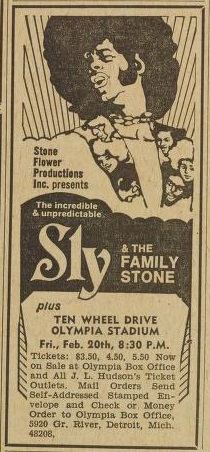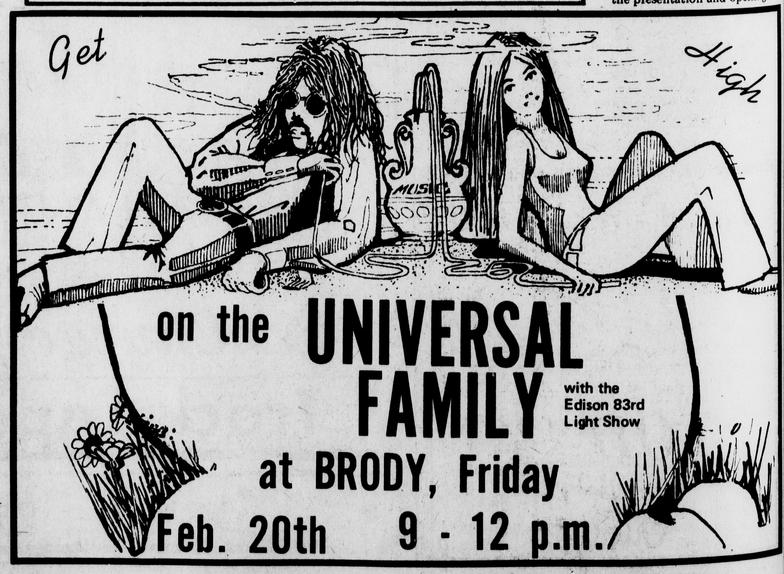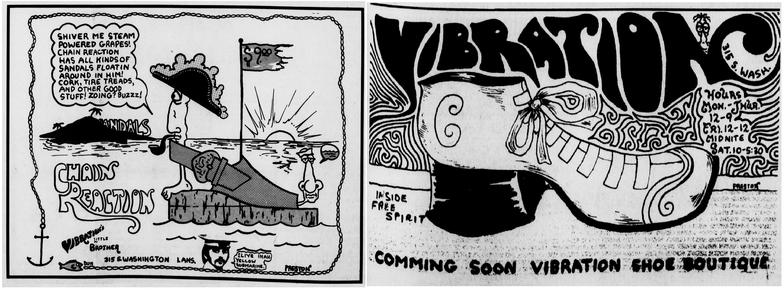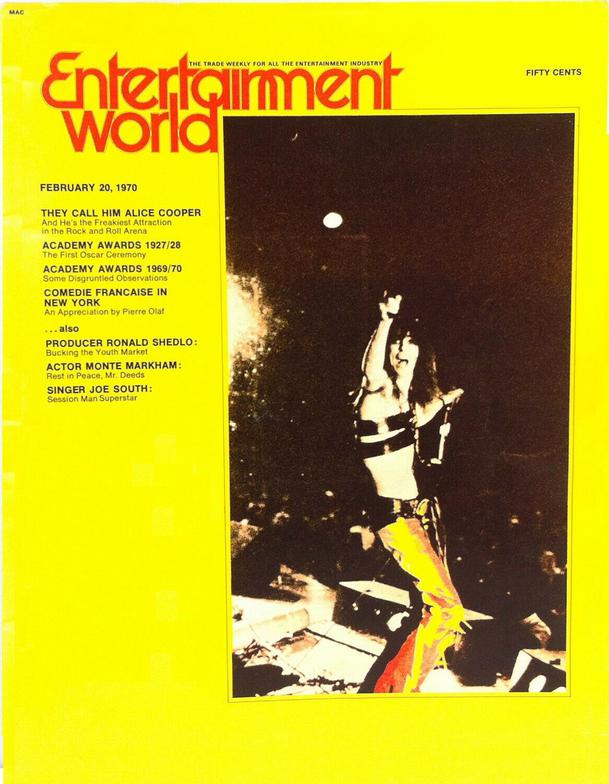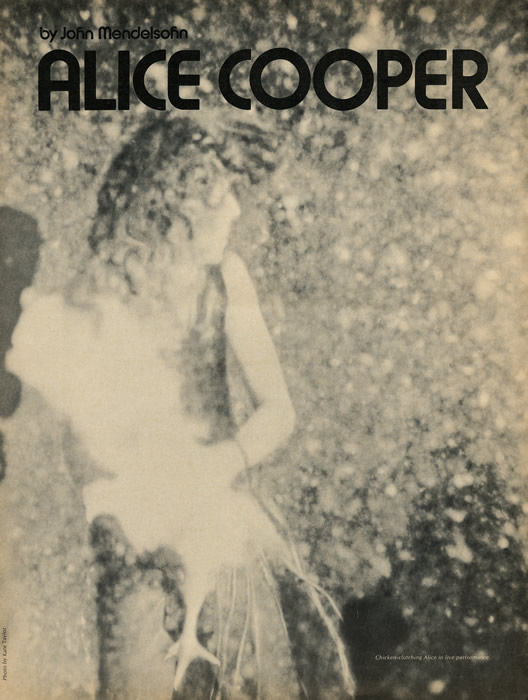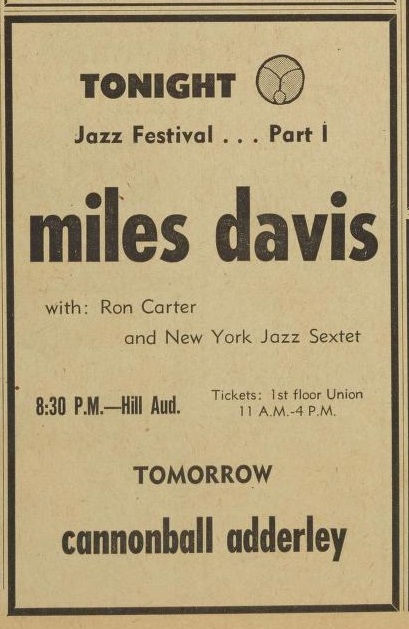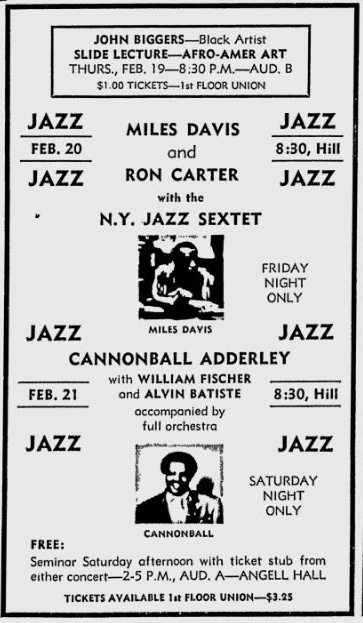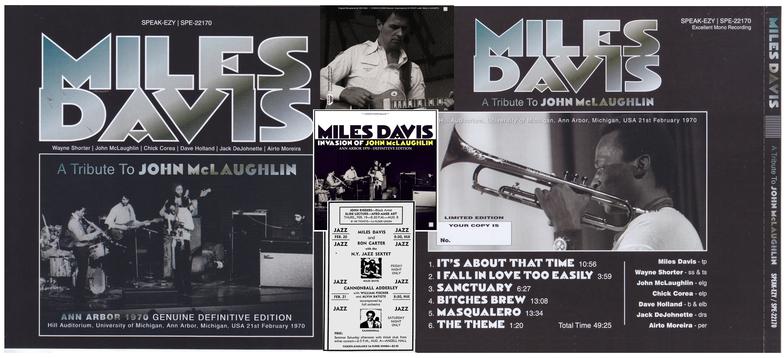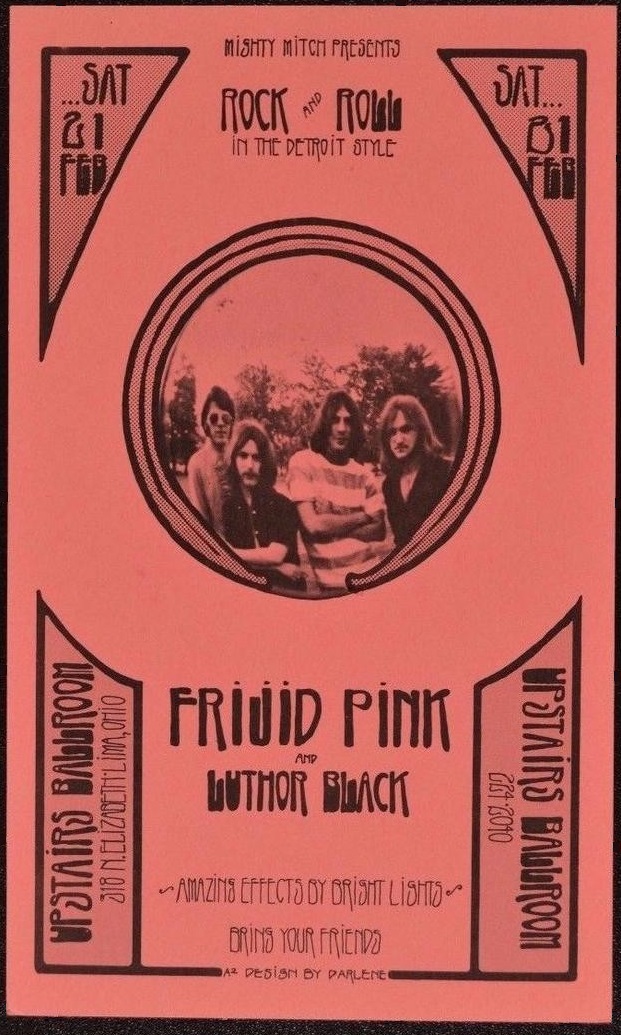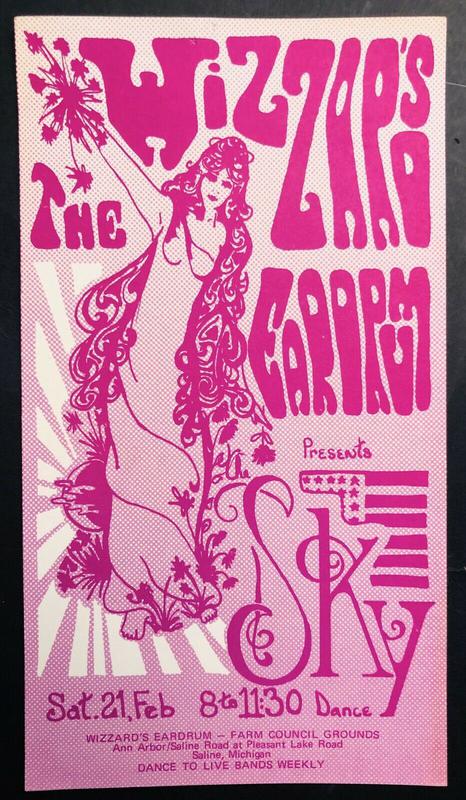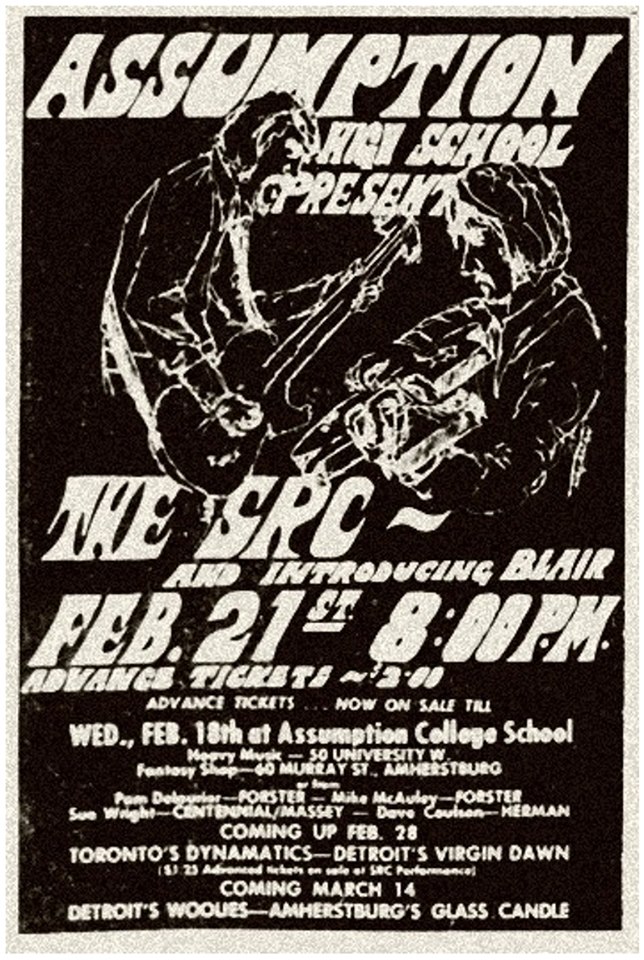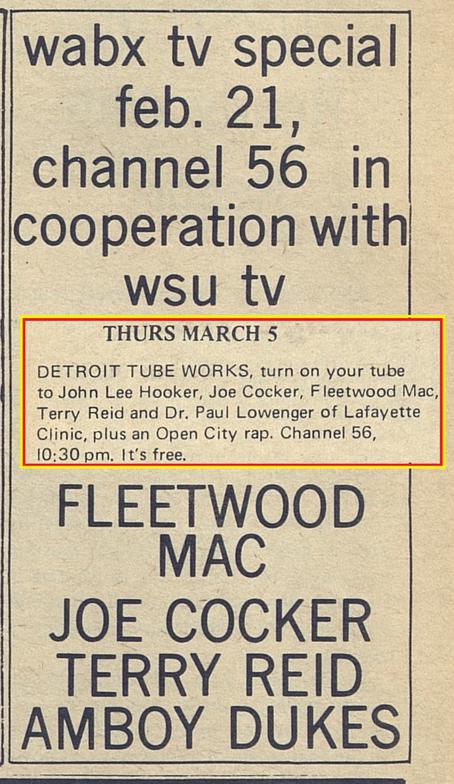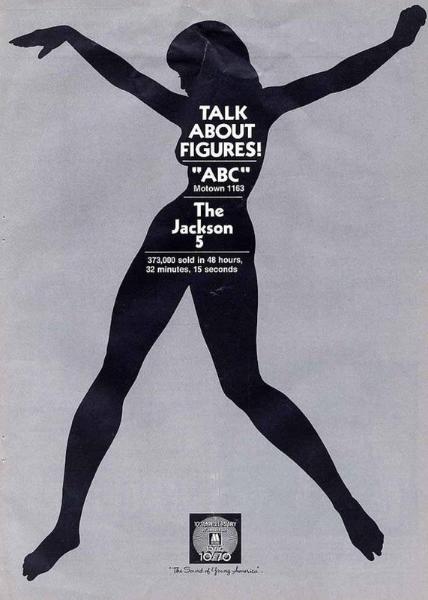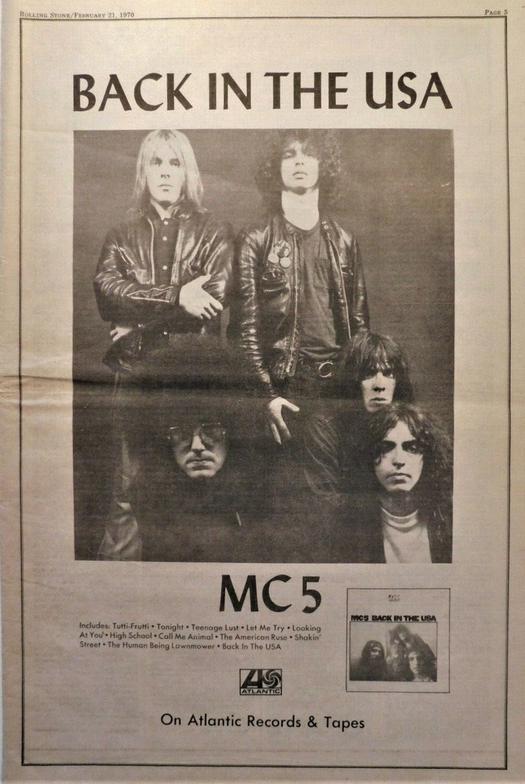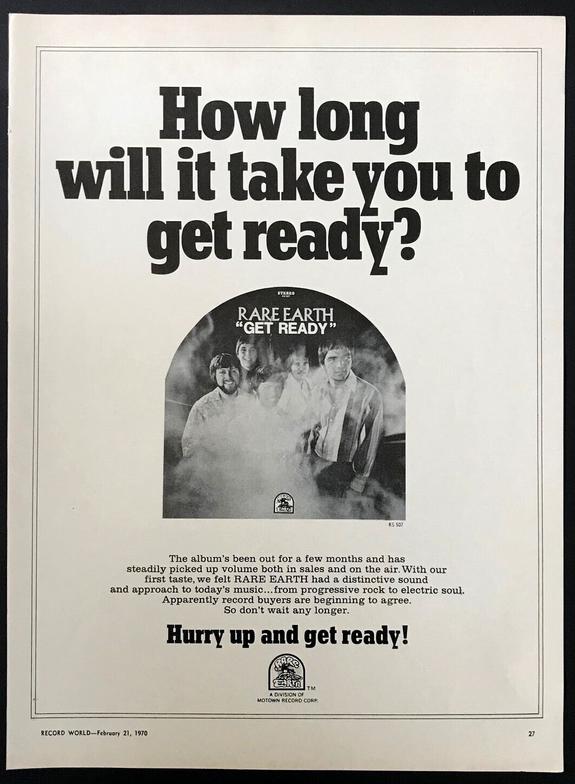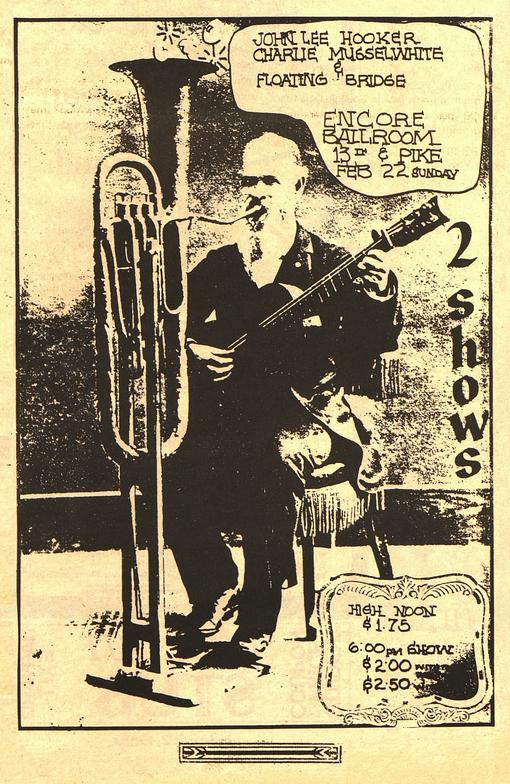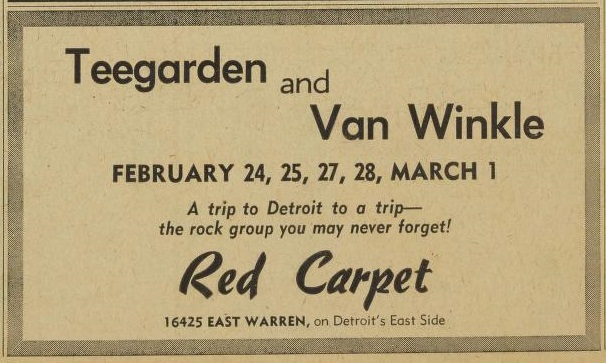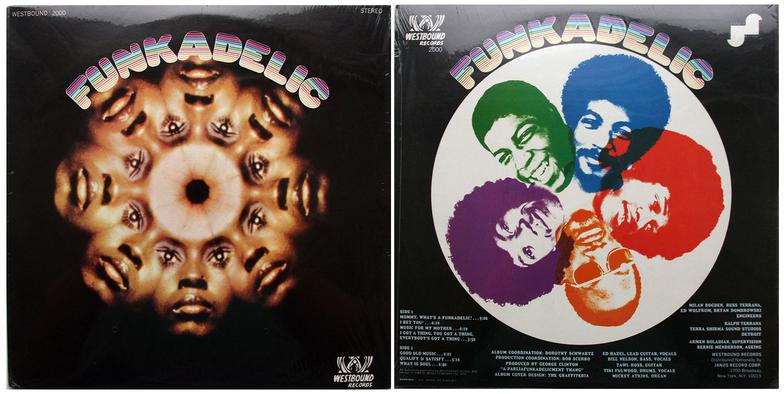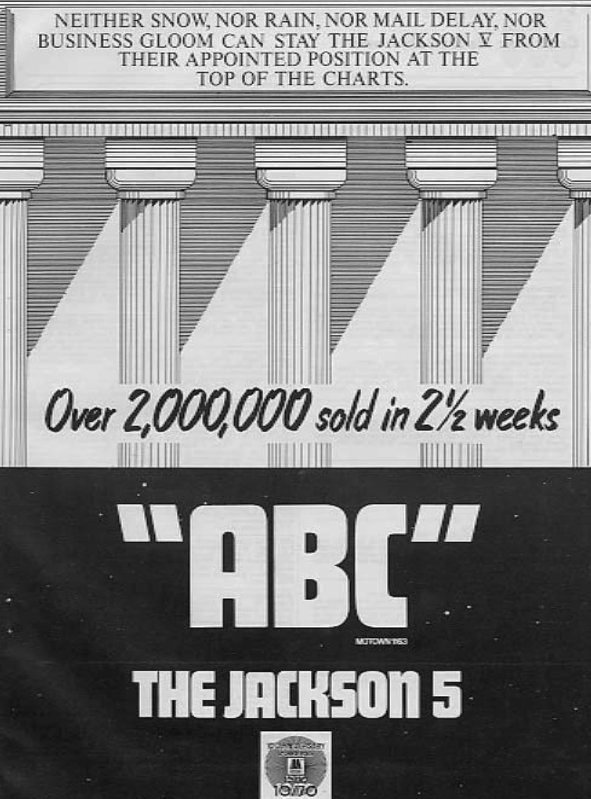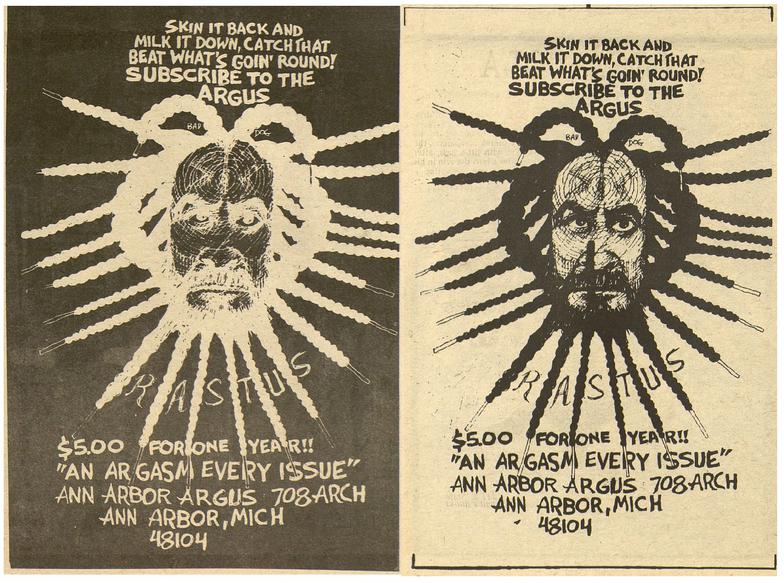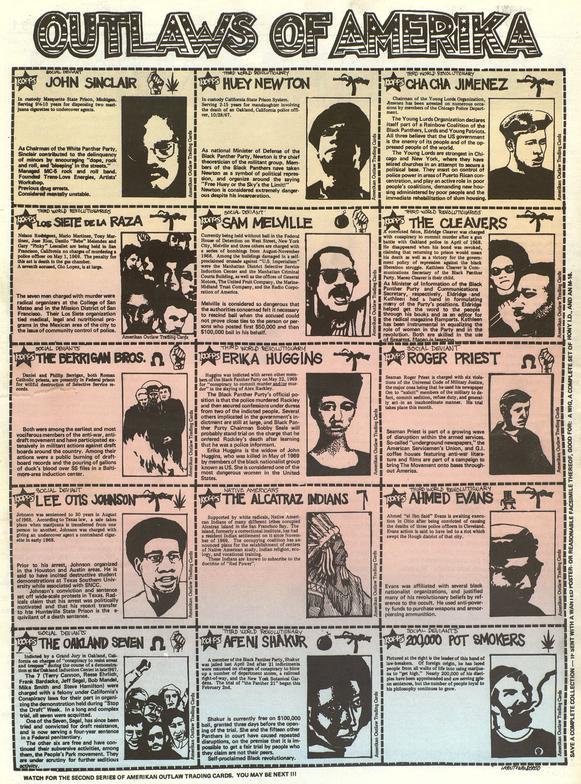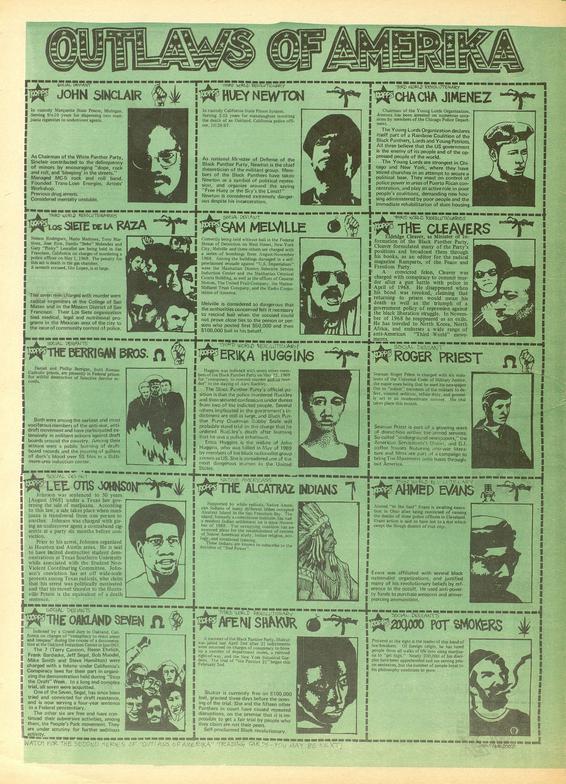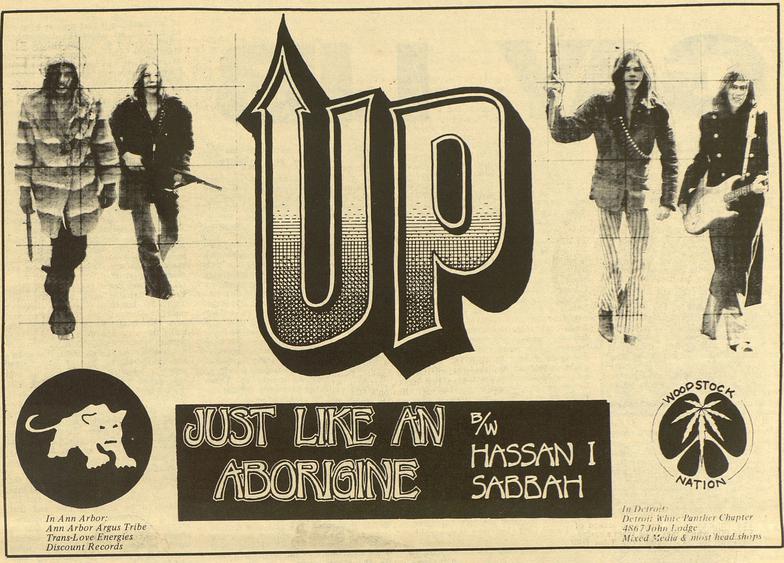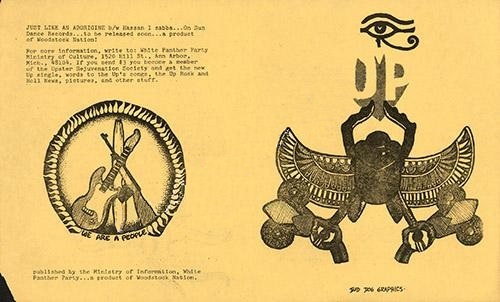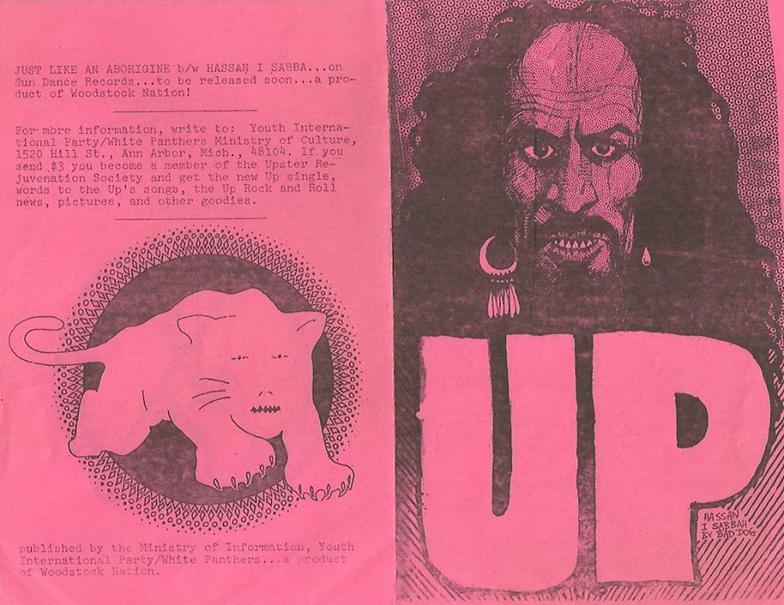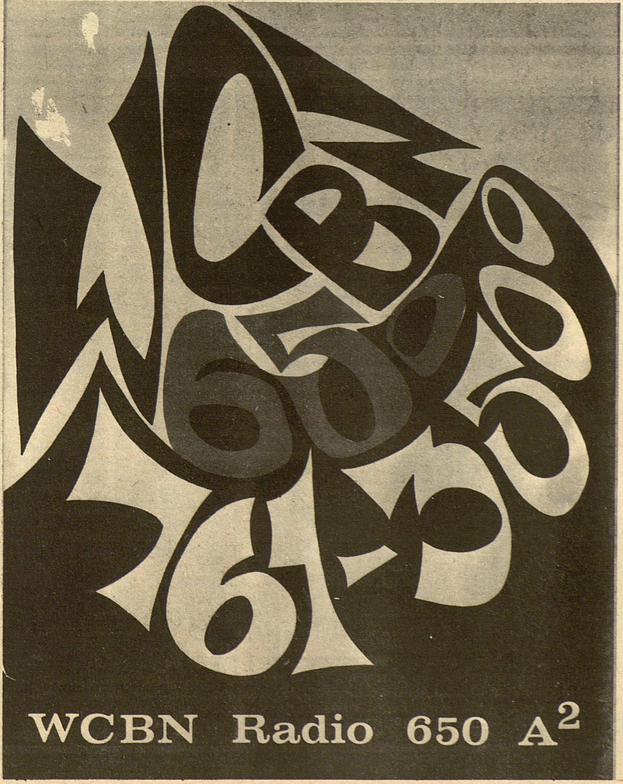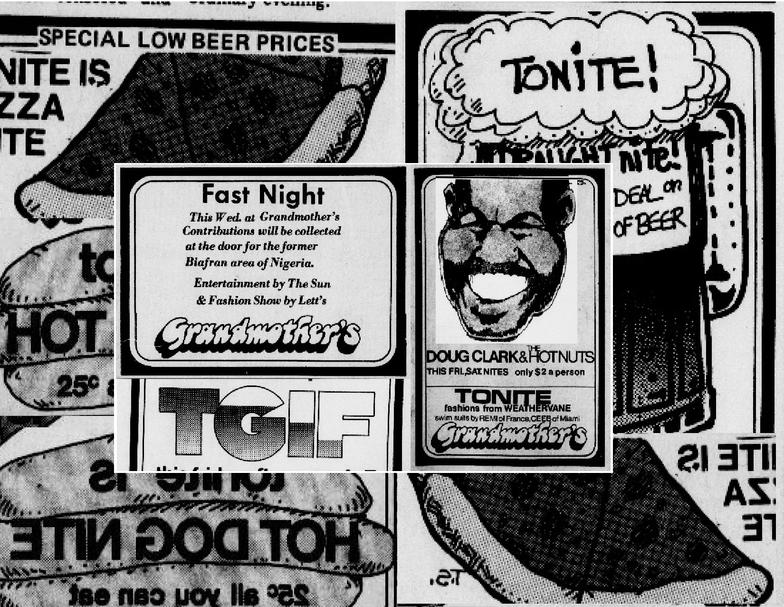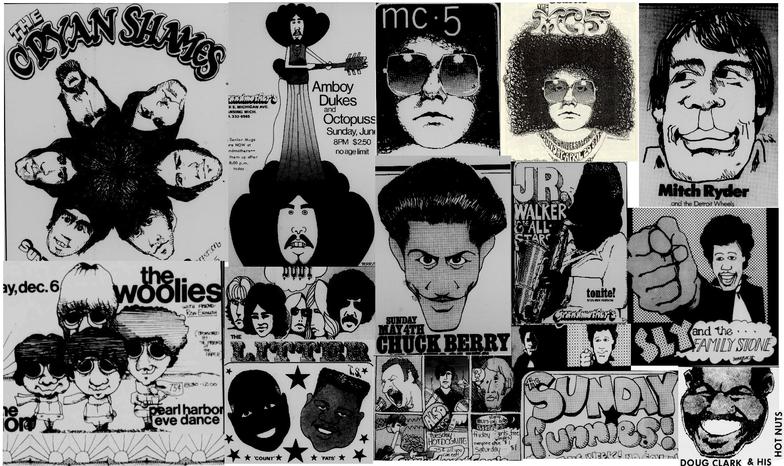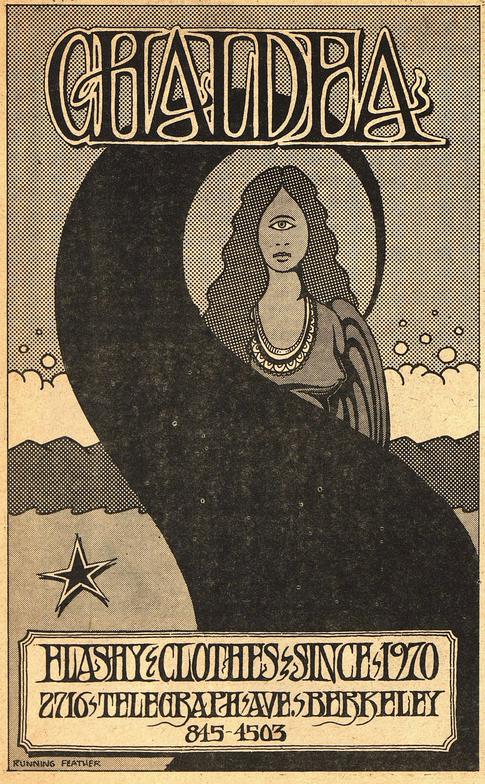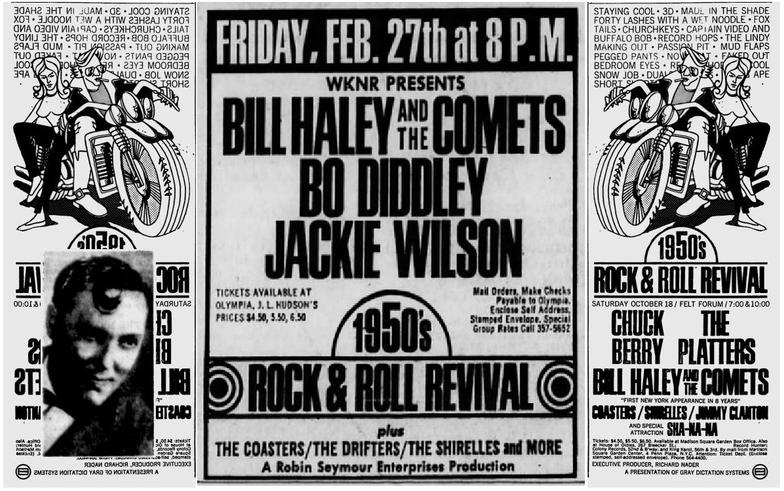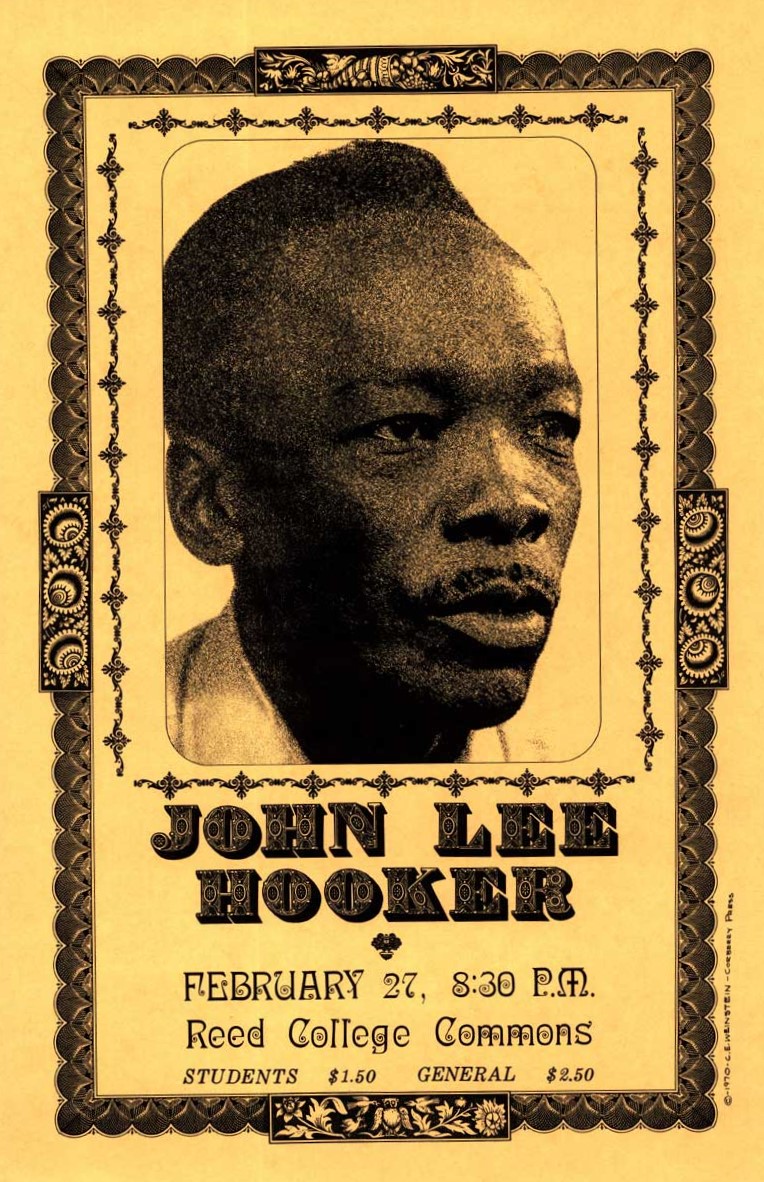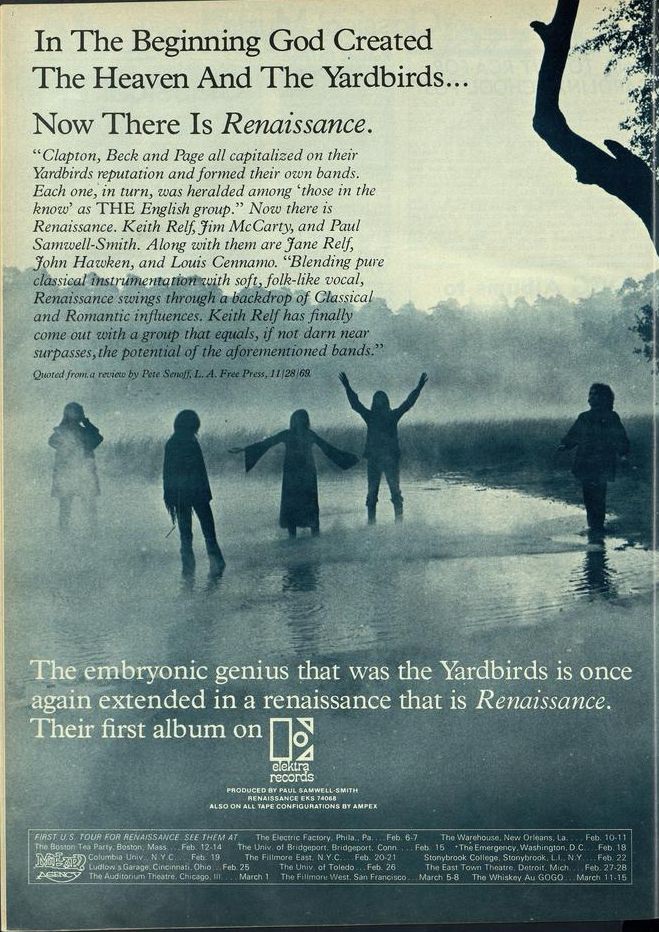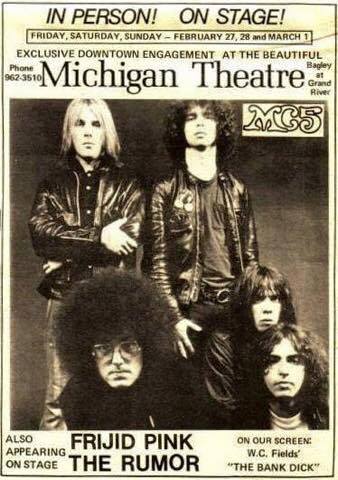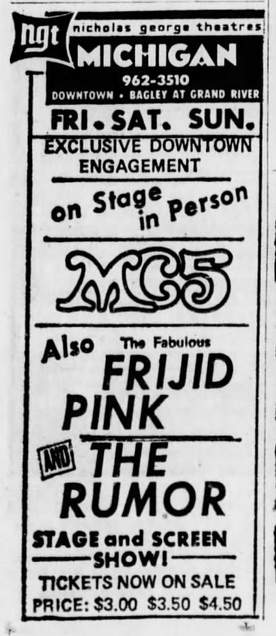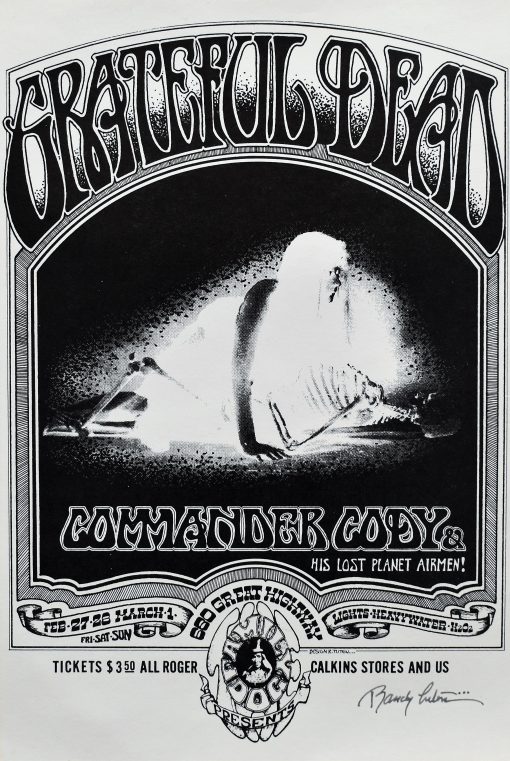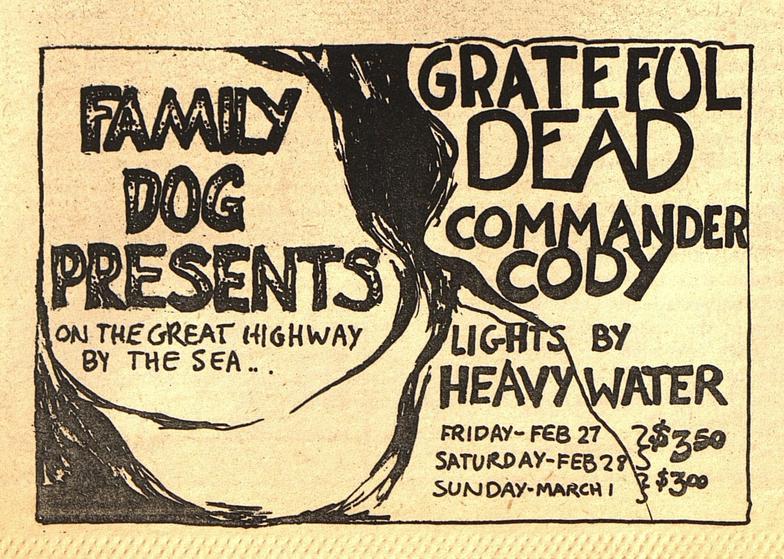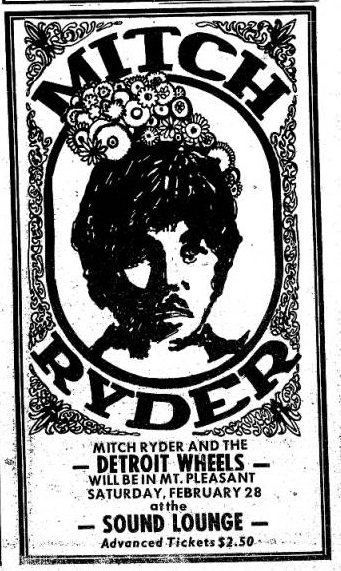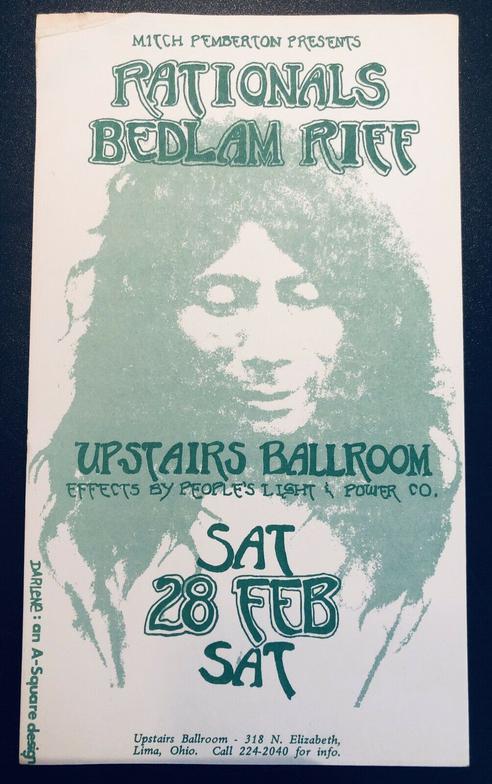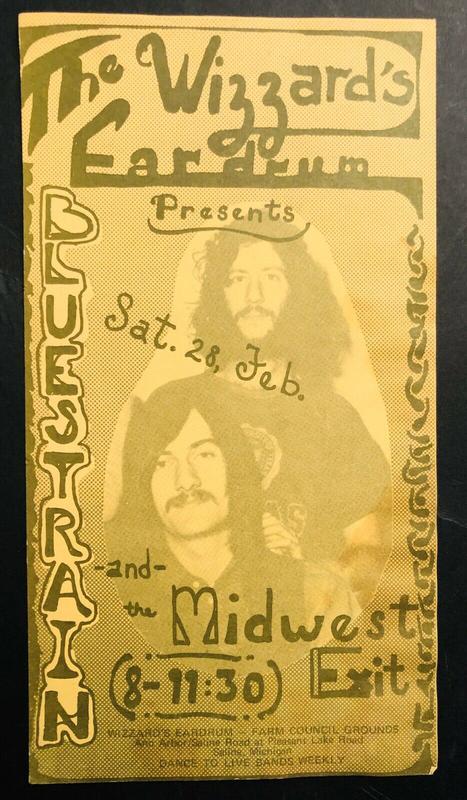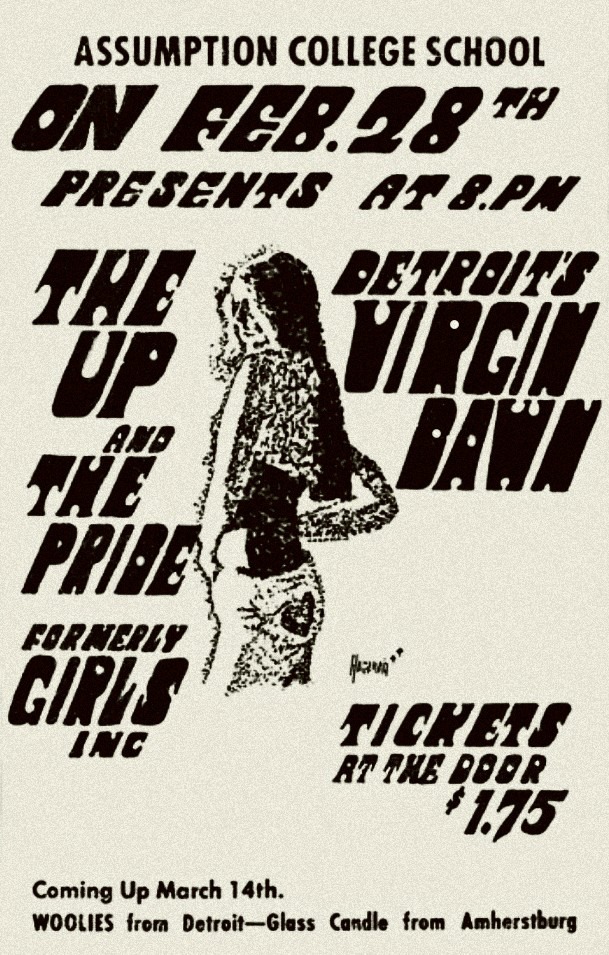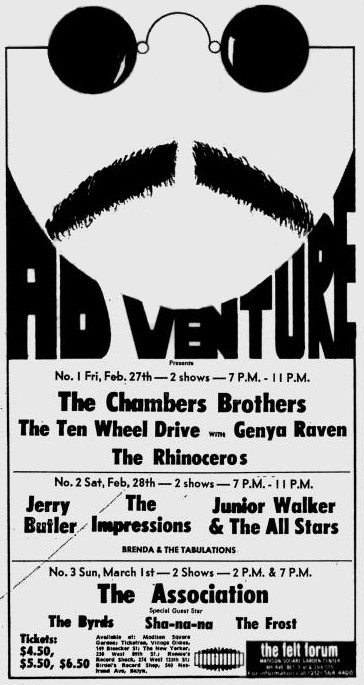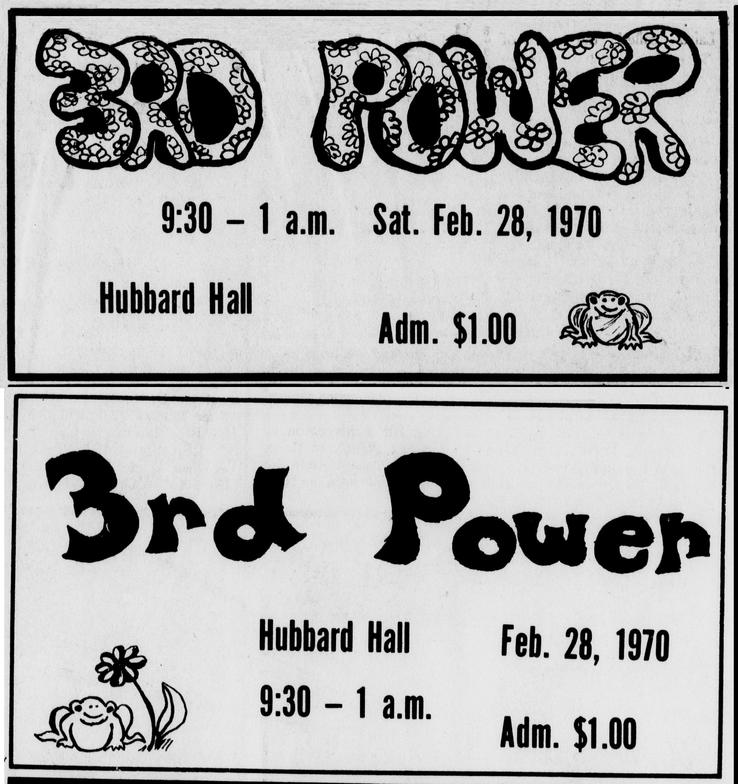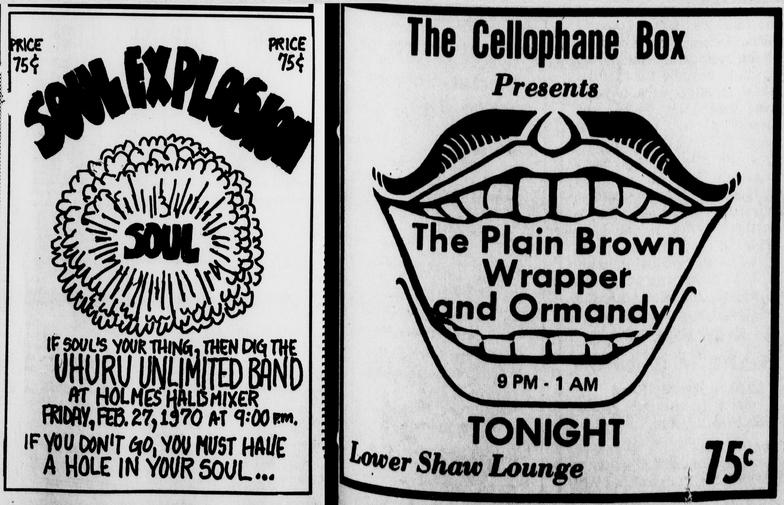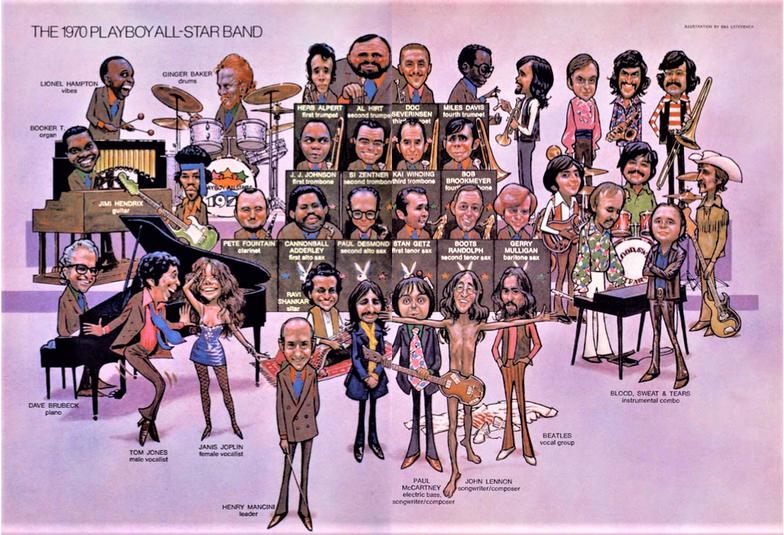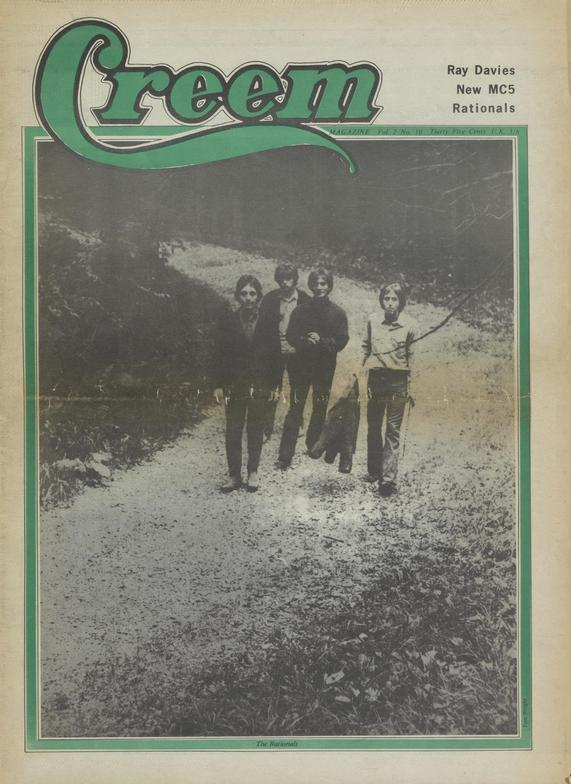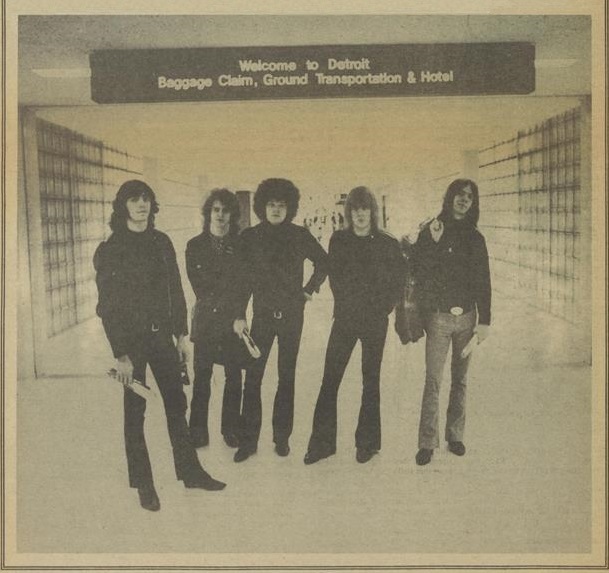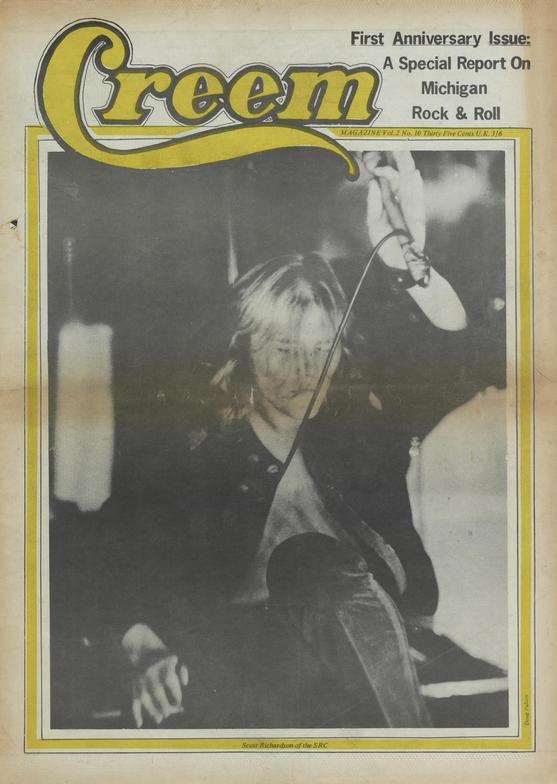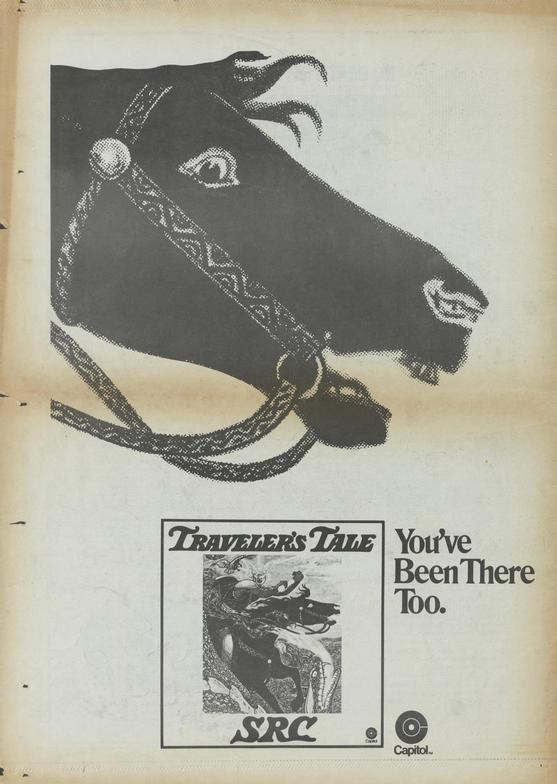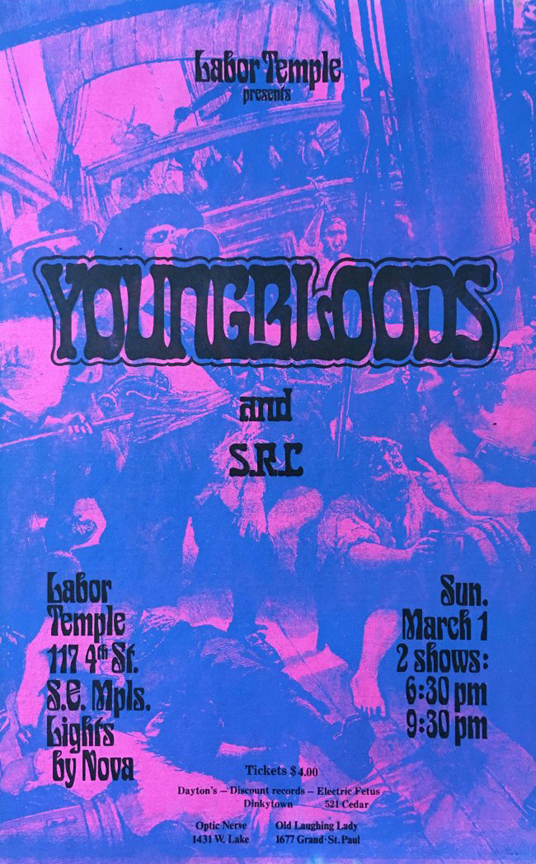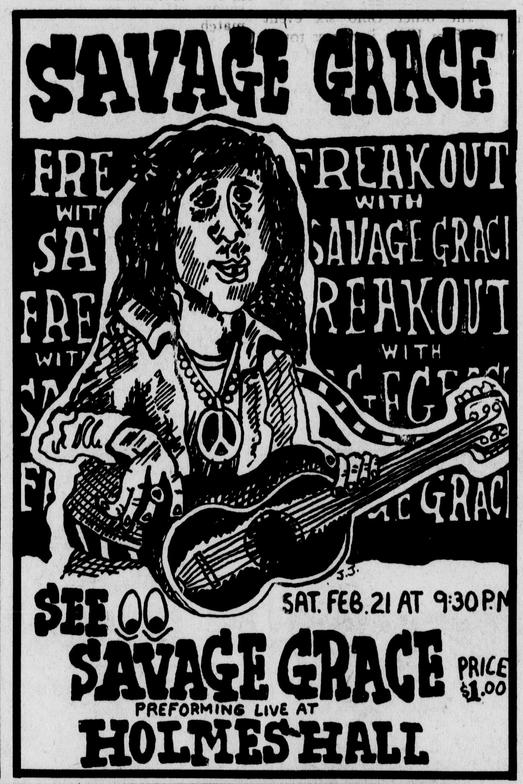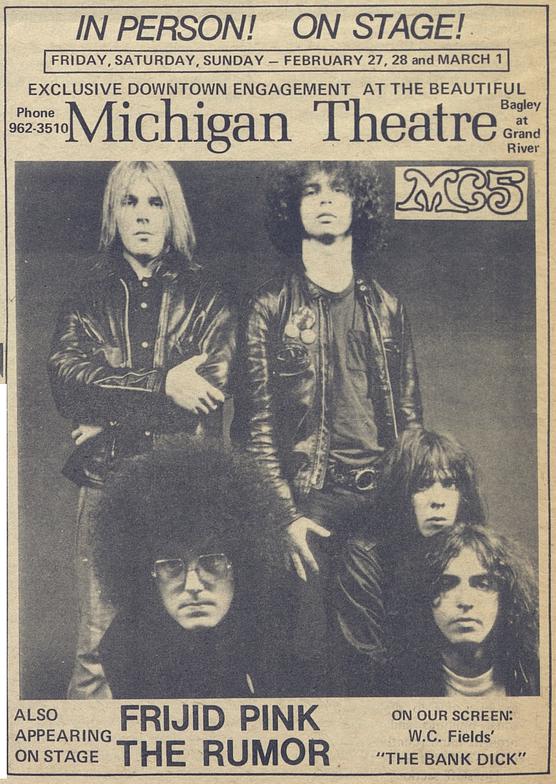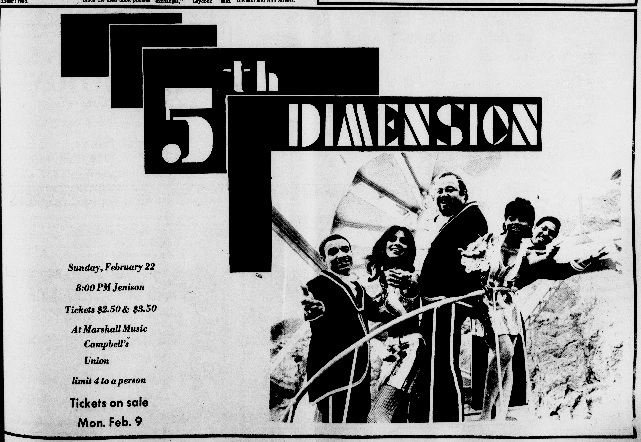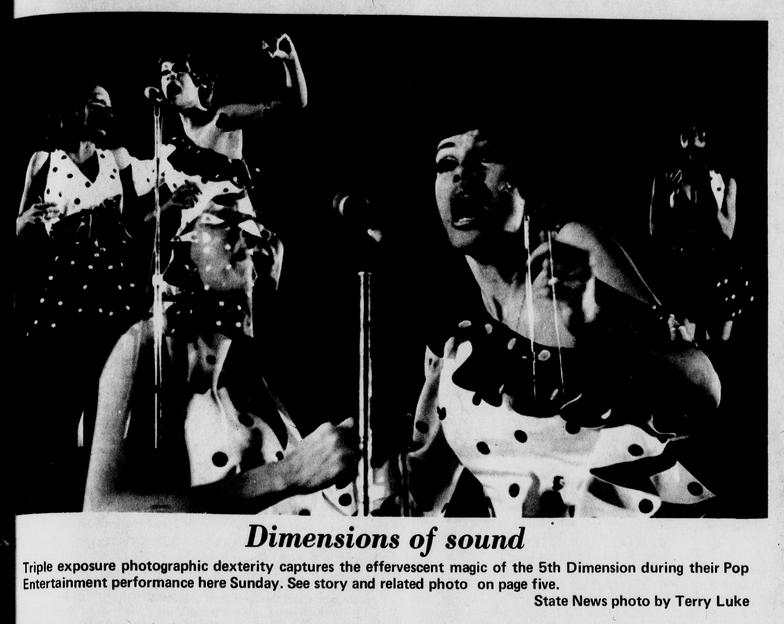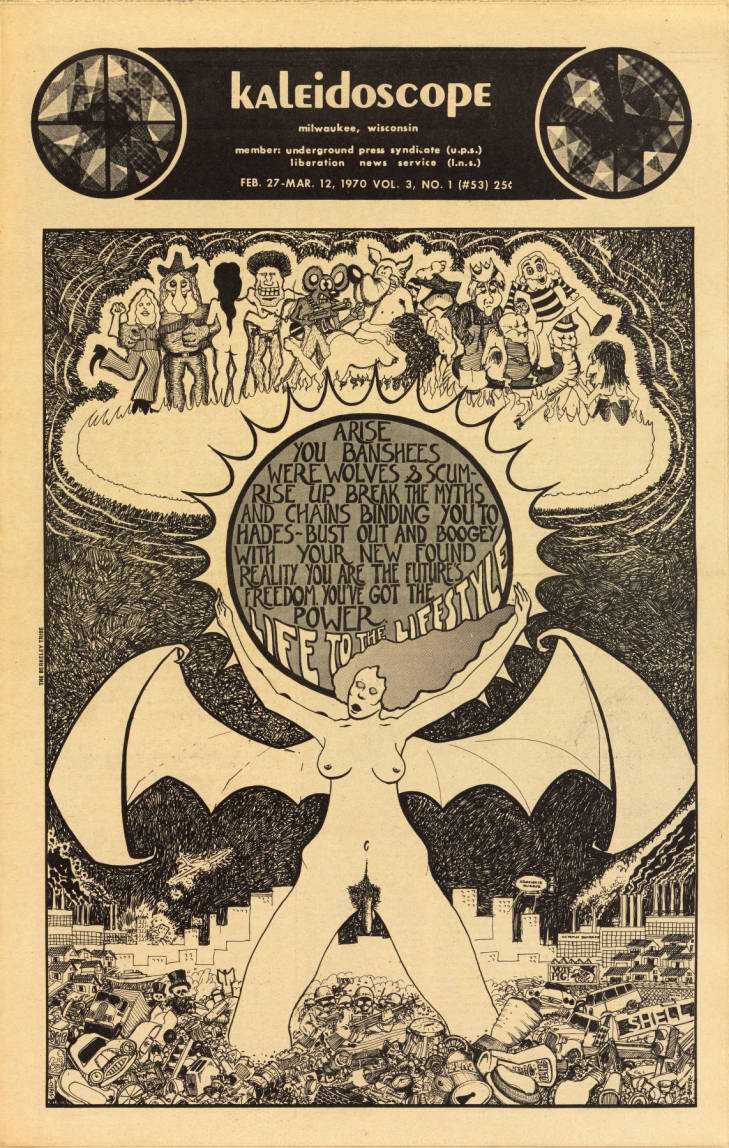Splatt Gallery
Double click here to add text.
Splatt Gallery's History of Michigan Concert Posters
Volume Six - 1970 - Page Four
**********************************************************
Grand Funk Railroad at the Ludlow Garage in Cincinnati, Ohio, February 20-21, 1970 with another of Jim Tarbell’s Persian rug-design posters. The opening band, the Lemon Pipers, from Oxford, Ohio, are credited for having the first “bubblegum pop” song to reach #1 on the Billboard Hot 100 singles chart with the 1968 hit “Green Tambourine”.
The Lemon Pipers – Green Tambourine (1967)
https://www.youtube.com/watch?v=S5Vz-z4PEkk
An ad for Sly & the Family Stone at Olympia Stadium in Detroit, Michigan on February 20, 1970. Unfortunately, the show was cancelled and was rescheduled for April 11th, but that show was also cancelled and rescheduled for November 13th, but for the third time, that show was again cancelled.
The ad does say Sly was “unpredictable”, out of a total of 80 shows scheduled in 1970, twenty-six of them were cancelled. Finally, on November 15th, the band performed at Cobo Arena and, according to the show review, all was forgiven.
A new poster artist in the East Lansing, Michigan area, this one for Universal Family at Brody Hall at Michigan State University, February 20, 1970, is not signed, but from the drawing style that we’ll continue to see, the artist is named Perry Highway. “Get High on the Universal Family” with a hookah labeled “music”.
A nice poster/ad, signed by an unknown artist “J.J.”, for the continuing Freak Out series in East Lansing, at Holmes Hall at Michigan State University, February 21, 1970, with Savage Grace.
Another pair of shoes ads by Dennis Preston. The lower one announces the addition of the Vibration store to the Free Spirit collective mall in Lansing, Michigan, February 20, 1970. The upper one shows the Chain Reaction store, “Vibration’s Little Brother”, in full sail on May 4th and has the first appearance of Preston’s “nose-men” and their text-crammed word balloons.
We believe that this is the first time that Alice Cooper appeared on the cover of a magazine, on this February 20, 1970 issue of Entertainment World, a trade weekly for the entertainment industry. “They call him Alice Cooper and he’s the freakiest attraction in the rock and roll arena”.
An inside full-page photo of Alice Cooper in the February 20, 1970 issue of Entertainment World magazine.
A pair of ads for Miles Davis at Hill Auditorium in Ann Arbor, Michigan on February 20, 1970, marking well over 100 Michigan appearances since 1947.
The show by Miles Davis at Hill Auditorium in Ann Arbor, Michigan on February 20, 1970, was apparently the only time that Miles and guitarist John McLaughlin ever performed together on stage. A bootleg recording was called “Invasion of John McLaughlin”. You can hear the entire concert here:
Miles Davis – Live in Ann Arbor (2/20/70)
https://www.youtube.com/watch?v=vVuTSl1D3Lw
Handbill by Darlene Pond for Frijid Pink and Luthor Black at the Upstairs Ballroom in Lima, Ohio, February 21, 1970.
Handbill by an unknown artist for an appearance by the band Sky at the Wizzard’s Eardrum in Saline, Michigan, February 21, 1970.
Poster by an unknown artist for Assumption High School in Windsor, Ontario, Canada, with an appearance by SRC on February 21, 1970, and upcoming shows with Virgin Dawn on the 28th, and the Woolies on March 14th.
Detroit Tube Works was a groundbreaking development in music television with astonishing great content. Sam Leighty tells the story much better than we can, here:
http://www.furious.com/perfect/detroittubeworks.html
As you’ve read, Sam lived near St. Louis, Missouri, and had to connect a box to his phone line to receive the broadcasts. We believe that folks in Detroit could simply turn on their TV’s.
It’s been difficult to pin down exactly when the show began, as WABX-FM radio apparently dabbled in some television production as early as 1969, but we think we may have found it. The above advertisement for a TV special on February 21, 1970 does not mention Tube Works by name, but certainly appears to be a prototype of the nature of the show. However, two weeks later, on the insert from March 5, 1970, the title appears for the first time (that we’ve found), the line-up is pretty much the same, with the exception of having John Lee Hooker instead of the Amboy Dukes.
Here is a short clip from the ending of an unspecified episode with a cute, unknown hostess that someone may recognize. The music also reminds us of the Moondog Symphony, which as we know, was the sound that also heralded the arrival of an earlier revolution.
https://www.youtube.com/watch?v=mwm40sz8T2U
There are a fair amount of videos available and we will be featuring them as they come up, we believe this John Lee Hooker episode may be the earliest one, perhaps even the March 5, 1970 broadcast. The host at the beginning may be Larry Miller, the inventor of free-form radio.
John Lee Hooker – Live on Detroit Tube Works (1970)
https://www.youtube.com/watch?v=XaqJii1aGKA
A Motown Records ad for the second single on the label by the Jackson 5, and their second consecutive #1 hit. “ABC” knocked the Beatles' "Let It Be" off the top of the Billboard Hot 100 chart, and was #1 on the Soul Singles chart for four weeks.
The clip below is from the debut television performance, on American Bandstand on February 21, 1970, a few days before the single’s official release. As shown on the ad, it sold 373,000 copies in its first 48 hours, 32 minutes and 15 seconds.
The Jackson 5 – ABC (American Bandstand TV show) (2/21/70)
https://www.youtube.com/watch?v=ho7796-au8U
A full-page Atlantic Records ad in the February 21, 1970 issue of Rolling Stone magazine for the second album by the MC5 “Back In The USA”.
A full-page ad in the February 21, 1970 issue of Record World magazine for the second studio album by the band Rare Earth, but their first on the Motown subsidiary label also named Rare Earth.
Although the album had been released in September 1969, it wasn’t until February 18, 1970 that the title track “Get Ready” was released as a single.
Their cover of the 1966 Temptations’ hit was a popular part of their live shows while the group was performing under the name the Sunliners and was also a track on the band’s 1968 debut album on the Verve record label. Now that they were part of Motown, the label wanted them to re-record the track.
The band responded with a 21-minute version that took up the entire second side of the album. Motown edited it down to a radio-friendly three minute length, and it became a nation-wide hit, even surpassing the Temptations version. Here is the full album version:
Rare Earth – Get Ready (album version) (1969)
https://www.youtube.com/watch?v=q-Rg9xwZoo8
Two more shows by John Lee Hooker in Seattle, Washington, at the Encore Ballroom on February 22, 1970.
Teegarden & Van Winkle five-night stand at the Red Carpet Lounge in Detroit, starting February 24, 1970. We’re posting this to see if the attempt of a tag line makes sense to anybody else. “A trip to Detroit to a trip – the rock group you may never forget”. Huh?
Funkadelic released their debut, self-titled album on February 24, 1970 on Westbound Records. Here are the full seven tracks:
Funkadelic – Funkadelic (album) (1970)
https://www.youtube.com/watch?v=4vYZ0LQkWo0
A Motown Records ad for the second single on the label by the Jackson 5, released on February 24, 1970. “ABC” was their second consecutive #1 hit, following "I Want You Back", five months earlier. As stated on the ad, “ABC” sold over two million copies in two-and-a-half weeks.
Subscription ads in the February 24, 1970 issue of the Ann Arbor Argus newspaper by Al Shamie (Bad Dog), published in two polarities.
A series of Outlaws of Amerika trading cards, designed by Chicago artist Wanderoo, were published in numerous underground newspapers across the country, such as the green set above from the back cover of the February 24, 1970 issue of the Ann Arbor Argus.
Newspaper ad for the single “Just Like An Aborigine” by UP, by Gary Grimshaw art in exile.
Up - Just Like An Aborigine (1970)
https://www.youtube.com/watch?v=qg_kfGtQiOM
A promo card prior to the release of the single “Just like an Aborigine” by UP with art by Al Shamie (Bad Dog), and what may be the earliest version of the “tri-pod”, presumably by Gary Grimshaw. This symbol will be used extensively in various permutations, this one employs a guitar, a gun, and a joint, and since it pre-dates the release of the single, it would be from January, or early February, 1970.
We think this is a bit earlier than the similar Woodstock Nation symbol, which we’ll see later, but both are modeled on the famous Peace Symbol, which was created in 1958 by British artist Gerald Holtom for the British Campaign for Nuclear Disarmament, who based the design on flag semaphore for the letter “N” (two arms extended downward at forty-five degrees) and the letter “D” (one arm straight up and the other straight down).
Another promo card for the up-coming single by UP, by Al Shamie (Bad Dog).
Nice little layout for WCBN radio in Ann Arbor, Michigan, circa February, 1970.
Doug Clark & the Hot Nuts returned to Grandmother’s in East Lansing, Michigan, February 27-28, 1970, after nearly a two-year absence. This was also the end of the posters by Terry Sharbach, for reasons no more nefarious than that he graduated from Michigan State University, and probably not because he was being asked to draw more food instead of more musicians. With his bachelor degree in graphic design, he worked for various ad agencies, eventually becoming the art director at the AAA auto club.
For the two years that he was a graphic arts student at Michigan State University, 1968 and 1969, Terry Sharbach made all of the posters for Grandmother’s in East Lansing, creating a collection of famous faces.
For a guy that was on the run from the law, Gary Grimshaw was pretty easy to find. Every two weeks, from August through November, 1969, his name was clearly visible amongst the staff member names in the pages of The Berkeley Tribe newspaper in Berkeley, California.
We’ve heard he was beginning to catch some heat right about then, and his name was gone by the beginning of December, even though his art could still be found by a discerning eye, usually still signed “Grimshaw”. But in this ad for the Chaldea clothing store that ran in two of the February, 1970 issues, it looks like the artist took the extra step of subterfuge signing the piece as Running Feather (pretty clever), but is there any doubt?
Richard Nader was a talent agent at Frank Barsalona’s Premier Talent Association in New York City, the agency almost singularly responsible for “the British Invasion”, but in the midst of all the success of bringing British acts from Herman’s Hermits to The Crazy World of Arthur Brown to the United States, Nader felt that his beloved stars from the original rock and roll days of his youth were being swept aside and he began to pitch the idea for a “Rock and Roll Revival” show featuring “oldies” acts such as Bill Haley, Bo Diddley, and Chuck Berry.
The idea was continually dismissed by the agency for nearly four years, until Nader finally decided to leave Premier and promote his dream show on his own, producing the first Rock and Roll Revival at the Felt Forum in NYC on October 18, 1969. The show was such a success that Nader took it on the road, bringing it to the Olympia Stadium in Detroit on February 27, 1970 with headliners Bill Haley & the Comets, Bo Diddley, and Jackie Wilson.
Our long-time readers may recall that our history of Detroit rock and roll essentially began with Michigan native (born in Highland Park) Bill Haley, and the many “firsts” that can arguably be attributed to Haley and his Comets. The first rock and roll concert in Detroit is sometimes credited to their August, 1955 shows at the Broadway-Capitol Theater (today’s Detroit Opera House), but of course, we cited the November, 1954 run of shows at the Club Gay Haven in Dearborn, Michigan as the earlier, and more classic, beginning.
In December, 1969, a couple of months after the first Rock and Roll Revival, Bill Haley & the Comets recorded their live set over a six-night stand The Bitter End club in NYC and you can hear Richard Nader, in his introduction of the band, tell the audience about the eight-and-a-half minute standing ovation the Comets had received at the first Rock and Roll Revival.
All that we’ve seen owes no small debt to these songs.
Bill Haley –Scrapbook (album) (live at The Bitter End, NYC, December, 1969)
https://www.youtube.com/watch?v=gW5MfzZslpU&list=PL-rJYyOlNZaHEAjRqfqcGAXtbkvf8uL2Z
Poster by C.E. Weinstein for John Lee Hooker at Reed College in Portland, Oregon on February 27, 1970.
An Elektra Records ad for the band Renaissance with tour dates including two shows at the Eastown Theater in Detroit, Michigan, February 27-28, 1970. The band, formed by former members of the Yardbirds, opened for Southwind and Savoy Brown on both nights.
The Michigan Theater on Bagley Avenue in Detroit was built during the second great wave of movie theater construction in the late 1920’s, one of the largest, if not the largest, and certainly the most opulent. Like the majority of these great theaters, its popularity and attendance had faded by the 1960’s, and in 1967 it was saved from demolition by Nicholas George who made the physical restorations in hopes of an audience restoration. It re-opened with a screening of “The Valley of the Dolls”.
George operated it simply as a movie theater, never attempting to bring to live music back to the stage, as had been a reliable feature from the 1930’s through the 50’s, when top acts from the Big Band era, from Duke Ellington, to Spike Jones held long and frequent residencies.
By 1970, failure was again imminent, and Robin Seymour convinced George to give the music one last chance, as they booked the MC5 for three nights, February 27, 1970 – March 1, 1970.
Newspaper ad for the MC5 at the Michigan Theater, February 27, 1970 – March 1, 1970.
Poster by Randy Tuten for Commander Cody & his Lost Planet Airmen opening for the Grateful Dead at the Great Highway in San Francisco, California, February 27, 1970 – March 1, 1970.
An ad for Commander Cody & his Lost Planet Airmen opening for the Grateful Dead at the Great Highway in San Francisco, California, February 27, 1970 – March 1, 1970.
Unique poster by an unknown artist for Mitch Ryder & the Detroit Wheels at the Sound Lounge in Mount Pleasant, Michigan, February 28, 1970, in the style of Connie Keelan’s posters for the Spike Drivers. This appears to be the final show at the Sound Lounge, which today, is apparently the site of a hookah bar.
We don't believe the Wheels reformed, Ryder's posters would often include the tag regardless.
Poster/handbill by Darlene Pond for A-Square Designs with the Rationals and Bedlam Riff at the Upstairs Ballroom in Lima, Ohio, February 28, 1970.
Handbill by an unknown artist for Blues Train and the Midwest Exit at the Wizzard’s Eardrum in Saline, Michigan, February 28, 1970. Blues Train were a Canadian band from Windsor, just across the river from Detroit, and apparently were associated with the mysterious Johnny Kitchen.
Kitchen has the writing credit for the track “Pain In My Head” on the Blues Train album linked below, one of over 200 songs that are copyrighted to Kitchen across a range of weird underground albums such as The Crazy People, The Victims of Chance, and The Trio of Time, linked to the Canadian record label Condor and other small labels.
Two of the tracks on the Crazy People album, an album of mash-up sound collage of music, tape loops and spoken word, include a sample of Wild Man Fischer singing the chorus, “My life is all brand new”, a track on Fischer’s debut album, but the Crazy People album pre-dates Fischer’s album by a year.
Kitchen was an elusive figure, but he seems to have left Canada in 1969, moving to Los Angeles, and there are theories that Kitchen was, in fact, Wild Man Fischer. Fischer, however, real name Larry, has a documented history as a native of Los Angeles, more likely there is some possibility that Kitchen had some role in the recording of Fischer’s album, released on Frank Zappa’s Bizarre Records.
The Blues Train – The Blues Train (album) (1969)
https://www.youtube.com/watch?v=B80sJwYrJ00&list=OLAK5uy_lY9l4UMg3YcilUOaZbyLBqCCK3tcFxEI0
The Crazy People – Bedlam (album) (1968)
https://www.youtube.com/watch?v=c_Xoa5urUxo
Wild Man Fischer – An Evening with Wild Man Fischer (album) (1969)
https://www.youtube.com/watch?v=JWC_Scvdgw8
A poster by an unknown artist for this concert with UP, Virgin Dawn, and The Pride across the river in Windsor, Canada, February 28, 1970. Girls Inc., a band name we’ve seen on a few posters so far, changed their name to The Pride, a band name we’ll see on a few more posters. That’s all we know.
Nice little ad for the Felt Forum in New York City. The database includes the appearance of Junior Walker & the All Stars on February 28, 1970, and Frost on March 1st.
A couple of ads by an unknown artist for the band Third Power at the Hubbard Hall at Michigan State University in East Lansing, February 28, 1970 with a signature frog on both.
A couple of competing events with two posters by an unknown artist for Michigan State University students in East Lansing on February 28, 1970, with the soul band Uhuru Unlimited Band at Holmes Hall, and Plain Brown Wrapper with Ormandy at the Lower Shaw Lounge.
The February 1970 edition of Playboy magazine’s annual All-Star Band, illustrated once again by Bill Utterback. The Beatles were the Vocal Group for the third year in a row, Jimi Hendrix was on guitar for the second year in a row, Doc Severinsen joined the horn section, replacing Louis Armstrong, Ginger Baker replaced Buddy Rich on drums, Paul McCartney replaced Charles Mingus on bass, Janis Joplin replaced Aretha Franklin for female vocalist, and Tom Jones finally knocked off Frank Sinatra, who had been the male vocalist every year since 1963.
New categories for Organ and Vibes were given to Booker T and Lionel Hampton, respectively, and two other new categories, Songwriter and Instrumental Combo went to Lennon & McCartney and Blood, Sweat & Tears.
The Rationals on the cover of the March 1970 issue of CREEM magazine, Volume 2, Number 10.
A nearly surreal photo of the MC5 at the Detroit airport by Charles Auringer in the March 1970 issue of CREEM magazine.
Scott Richardson of SRC on the cover of a second March 1970 issue of CREEM magazine. Continuing the confounding numbering of the early issues, this was published as Volume 2, Number 10, the same as the previous issue.
An ad for SRC’s “Traveler’s Tale” album on the back cover of the (second) March 1970 issue of CREEM magazine.
Poster by George Ostroushko with SRC opening for the Youngbloods at the Labor Temple in Minneapolis, Minnesota, March 1, 1970.
Volume Six - 1970 - continues - HERE
An ad for the Fifth Dimension at Michigan State University in East Lansing on February 22, 1970, with triple exposure photo from the show.
Dave Baker illustration on the cover of the February 27, 1970 issue of the Milwaukee Kaleidoscope newspaper in Milwaukee, Wisconsin.



